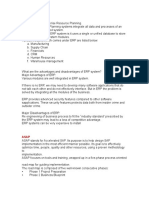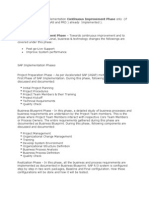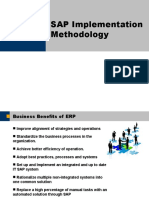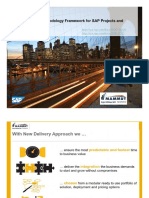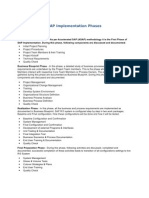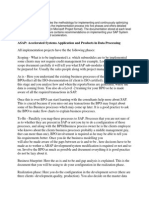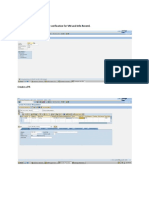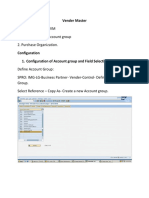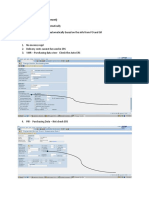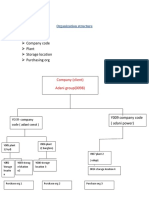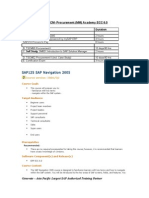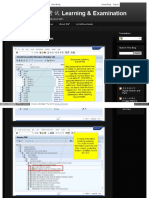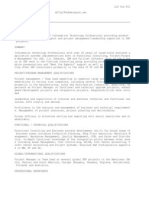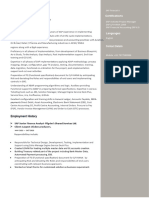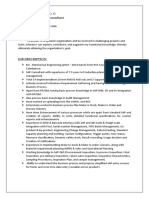0% found this document useful (0 votes)
101 views6 pagesSap Projects 1. Implementation Projects 2. Support Projects 3. Rollouts 4. Upgrades 5. Archiving 6. Developments / Enhancements
The document discusses the ASAP (Accelerated SAP) methodology for implementing SAP projects. It describes the 5 phases of the ASAP methodology: 1) Project Preparation, 2) Business Blueprint, 3) Realization, 4) Final Preparation, and 5) Go-Live and Support. Each phase involves configuring and testing different aspects of the SAP system and delivering key documents and deliverables to prepare for a successful SAP implementation.
Uploaded by
shreyas navadaCopyright
© © All Rights Reserved
We take content rights seriously. If you suspect this is your content, claim it here.
Available Formats
Download as DOCX, PDF, TXT or read online on Scribd
0% found this document useful (0 votes)
101 views6 pagesSap Projects 1. Implementation Projects 2. Support Projects 3. Rollouts 4. Upgrades 5. Archiving 6. Developments / Enhancements
The document discusses the ASAP (Accelerated SAP) methodology for implementing SAP projects. It describes the 5 phases of the ASAP methodology: 1) Project Preparation, 2) Business Blueprint, 3) Realization, 4) Final Preparation, and 5) Go-Live and Support. Each phase involves configuring and testing different aspects of the SAP system and delivering key documents and deliverables to prepare for a successful SAP implementation.
Uploaded by
shreyas navadaCopyright
© © All Rights Reserved
We take content rights seriously. If you suspect this is your content, claim it here.
Available Formats
Download as DOCX, PDF, TXT or read online on Scribd
/ 6










